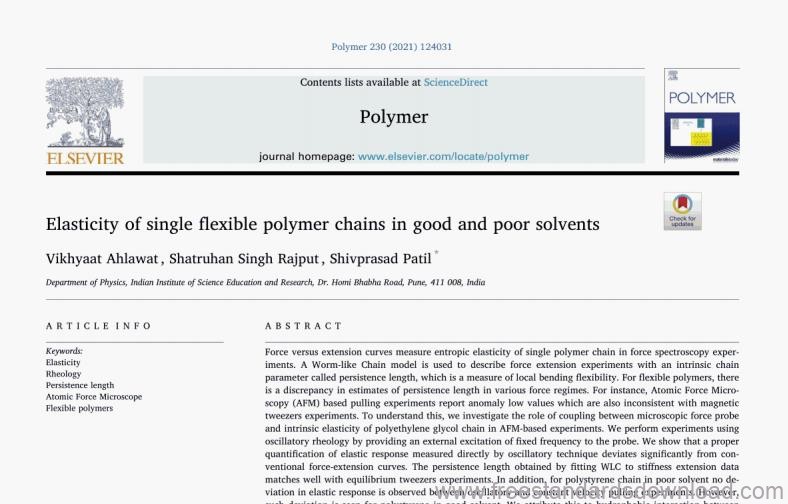
Force versus extension curves measure entropic elasticity of single polymer chain in force spectroscopy experiments. A Worm-like Chain model is used to describe force extension experiments with an intrinsic chain parameter called persistence length, which is a measure of local bending flexibility. For flexible polymers, there is a discrepancy in estimates of persistence length in various force regimes. For instance, Atomic Force Microscopy (AFM) based pulling experiments report anomaly low values which are also inconsistent with magnetic tweezers experiments. To understand this, we investigate the role of coupling between microscopic force probe and intrinsic elasticity of polyethylene glycol chain in AFM-based experiments. We perform experiments using oscillatory rheology by providing an external excitation of fixed frequency to the probe. We show that a proper quantification of elastic response measured directly by oscillatory technique deviates significantly from conventional force-extension curves. The persistence length obtained by fitting WLC to stiffness extension data matches well with equilibrium tweezers experiments. In addition, for polystyrene chain in poor solvent no deviation in elastic response is observed between oscillatory and constant velocity pulling experiments. However, such deviation is seen for polystyrene in good solvent. We attribute this to hydrophobic interaction between monomers of polystyrene in water, Our results suggest that oscillatory rheology on single polymer chains provide quantitative estimate of its elastic response. The consistency in values of persistence length using magnetic tweezers experiments in low force regime and the AFM experiments in high force regime suggests that WLC is successful in describing the polymer elasticity in the force range typically probed in AFM experiments.

